-
History & Society
- Education in Pre-war Hong Kong
- History of Taikoo Sugar Refinery
- Hong Kong Products Exhibition
- Local Festivals Around the Year
- Post-war Industries
- Pre-war Industry
- The Hong Kong Jockey Club Archives
- Tin Hau Festival
- Memories We Share: Hong Kong in the 1960s and 1970s
- History in Miniature: The 150th Anniversary of Stamp Issuance in Hong Kong
- A Partnership with the People: KAAA and Post-war Agricultural Hong Kong
- The Oral Legacies (I) - Intangible Cultural Heritage of Hong Kong
- Hong Kong Currency
- Hong Kong, Benevolent City: Tung Wah and the Growth of Chinese Communities
- The Oral Legacies Series II: the Representative List of the Intangible Cultural Heritage of Hong Kong
- Braving the Storm: Hong Kong under Japanese Occupation
- A Century of Fashion: Hong Kong Cheongsam Story
Geography & EnvironmentArt & Culture- Calendar Posters of Kwan Wai-nung
- Festival of Hong Kong
- Ho Sau: Poetic Photography of Daily Life
- Hong Kong Cemetery
- Sketches by Kong Kai-ming
- The Culture of Bamboo Scaffolding
- The Legend of Silk and Wood: A Hong Kong Qin Story
- Journeys of Leung Ping Kwan
- From Soya Bean Milk To Pu'er Tea
- Applauding Hong Kong Pop Legend: Roman Tam
- 他 FASHION 傳奇 EDDIE LAU 她 IMAGE 百變 劉培基
- A Eulogy of Hong Kong Landscape in Painting: The Art of Huang Bore
- Imprint of the Heart: Artistic Journey of Huang Xinbo
- Porcelain and Painting
- A Voice for the Ages, a Master of his Art – A Tribute to Lam Kar Sing
- Memories of Renowned Lyricist: Richard Lam Chun Keung's Manuscripts
- Seal Carving in Lingnan
- Literary Giant - Jin Yong and Louis Cha
Communication & Media- Hong Kong Historical Postcards
- Shaw Brothers’ Movies
- Transcending Space and Time – Early Cinematic Experience of Hong Kong
- Remembrance of the Avant-Garde: Archival Camera Collection
- Down Memory Lane: Movie Theatres of the Olden Days
- 90 Years of Public Service Broadcasting in Hong Kong
- Multifarious Arrays of Weaponry in Hong Kong Cinema
-
History & SocietyGeography & EnvironmentArt & Culture
-
View Oral History RecordsFeatured StoriesAbout Hong Kong Voices
-
Hong Kong Memory
- Collection
- All Items
- Oral History
Recently VisitedOral History
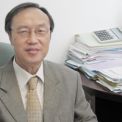
- Taking charge of Engineering Department of Ampex in the 1970s
Wong Hon Yee started to work at the Hong Kong branch of Ampex in 1969. In September 1970, he went to USA to further his studies. In early 1972, he returned to Ampex to take on the position of Instrumentation Section Manager of Engineering Department. He was responsible for designing test equipment for manufacturing and testing, including software and hardware, with focus especially on the latter. Ampex had branches all over the world for manufacturing or sales. Only those in USA and Hong Kong had engineering departments. The headquarters were in charge of audio-video products while the Hong Kong branch was first specialized in computer products and later included audio-video products such as electronic switching system and Betacam. At that time electronics industry in Hong Kong mainly manufactured consumer products. Ampex was specialized in industrial products and so had a relatively high demand on technology. It manufactured memory system for foreign companies, for example, compatible memory for Data General Corporation in USA. The engineering department in the Hong Kong branch had four sections for each of these products: magnetic core memory, stack memory, drafting and instrumentation. Among these, magnetic core memory was the major product of Ampex.
In 1974, Wong Hon Yee took charge of the whole engineering department because of his boss’ departure. The engineering department had to report to the US headquarters. At first the headquarters did not have enough confidence in this department and assigned only simple design projects to it. Later on, technology transfer between USA and Hong Kong was good; the Hong Kong branch could then meet the needs of the headquarters, and so was assigned the work of designing computer memory system. During those years Wong got hold of the latest design technology and acquired knowledge on engineering management by reading US journals on electronics industry. A few years after Wong had gone back to Ampex, the engineering department in Hong Kong was able to negotiate product design with their clients. The US engineering department was responsible for their local clients, whereas the Hong Kong counterpart dealt with the rest of the clients most of whom were from Europe and Japan, for example, Philips, General Electric, Siemens and Fuji. The Hong Kong branch had such high level of technology that they were considered Shaolin Monastery of the industry, training a lot of professionals in the field. Most of the engineers of the engineering department were male in their early twenties and mostly Hong Kong graduates (mainly from The University of Hong Kong and The Chinese University of Hong Kong); only a few had studied in North America. Wong was a member of the first generation of electronic engineers to be trained in Hong Kong. When he entered the University of Hong Kong in 1966, it was the only university in Hong Kong that had engineering department. In that year, sixty students were admitted; a little more than twenty of them graduated with specialization in electronics. One of his fellow schoolmates was Tam Chung Ting, who entered the university in 1965 and worked in Motorola after graduation. Nowadays the engineering departments in Hong Kong’s universities are as good as those in the rest of the world – there is not much difference among graduates trained in Hong Kong or overseas.
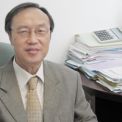
- A forerunner of technology transfer in electronics industry
Wong Hon Yee was mainly responsible for designing memory system during his early years in Ampex and later assisted in developing the hard-disk business. Rodime Company in Scotland was able to manufacture Winchester Drive with a capacity as high as 27MB – being second to none in the industry at that time. The Ampex headquarters bought the technology license from Rodime and sent Wong to Scotland to learn the technology of manufacturing and testing. After that Wong set up a production line for hard disc in Ampex, which was the first of its kind in the Far East. Hard-disk production was a new scope in Ampex, and the products had to be assembled in a dust-free room. Wong was satisfied with the result of foreign technology transfer. He thought that he was fortunate to learn high technologies such as magnetic core memory and hard disk. When the Hong Kong branch had gained more confidence from the headquarters, it was assigned to also manufacture products of the AV division. At that time the cassette tapes and video tapes of Ampex were worldwide famous. The headquarters had bought the license of Sony Betacam, and Wong had been sent to Japan to learn the video technology. Wong admitted that he had been involved in technology transfer many years ago and was grateful to the headquarters for their trust and the training offered to him. Wong left Ampex in 1992. He had worked as head of the engineering department for many years during which time he had trained a number of staff. Wong believed that the talents in Hong Kong, who were capable of doing research in high technology, would not be less competitive than that of other countries. He thought that the only thing that was lacking in Hong Kong was a breeding ground. In recent years, the electronics companies in the mainland have imported foreign technology, which has also helped nurturing new talents.
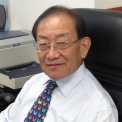
- Transmitting electronics technology in the Far East
In 1970, Lee joined another company, Ampex, and helped it set up a factory in Asia. He had to travel to Thailand, Taiwan, the Philippines and South Korea to inspect whether the countries was suitable for investment. The head office of Ampex finally ordered that the Asian factory be set up in Taiwan. Lee did not observe much difference in the level of electronic developments between Hong Kong and Taiwanin early 1970s. Although Taiwan’s development started later, it moved forward speedily. Their Minister of Finance, Li Kwoh-Ting, was very supportive to the industry and that was why Ampex started the first Asian circuit board factory in Taiwan. Setting up a factory in Hong Kong, in Lee’s opinion, could facilitate the transfer of technology to Hong Kong.
Lee opened a new Design Engineering Department for Ampex, the first amongst American electronic companies. The Department hired local Hong Kong-trained engineers such as H.Y.Wong, who, for a long time, had served as the factory’s Engineering Manager. The founder of Elec and Eltek had also worked at Ampex under Lee’s supervision until he got hold of the circuit board technology and started his own business. There were a lot of similarities between the Design Department in Hong Kong and that of the head office in the US, hence the Hong Kong engineers often went to the US for exchange visits. The Design Department had the most advanced machinery, allowing Hong Kong to produce top-rate designs. Lee pointed out that grasping the techniques were of prime important, whereas doing product tests was just a secondary procedure.
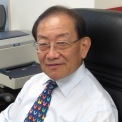
- Management Style and Corporate Value
Lee stressed that he never had any prior knowledge in management when he became Ggeneral Manager. The plant worked upon a three-shift basis. The morning shift lasted from 7am to 3pm, the afternoon shift from 3pm to 11pm, and night shift from 11pm to 7am. Lee would arrive at work before 7am and make a round of inspection at 7am and 3pm respectively. Occasionally he returned to his office at 11pm to show to the workers that he was with them and be there for them. Lee had developed a close relationship with the workers and made an outstanding performance in the industry. In its heyday, there were 3,800 workers at Ampex, making internal communication difficult. Therefore, Lee set up an amplifier in the plant and assigned all announcements to be made by a female worker with a beautiful voice. Music was played from time to time to forge a delightful working environment. He also installed air-conditioning and made sure the floor tiles were waxed in order to make the environment clean and comfortable. He offered the workers an attractive remuneration package with a wage that was 10% above the industry average. The factory was particular about technological standards, so the female workers who operated a microscope must have their eyes checked regularly. In addition, Ampex asked its female workers to wear uniforms to work.
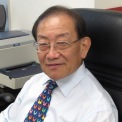
- Technological change and decline of Ampex
Ampex had many divisions around the world. The head division was in Los Angeles, specializing in core memory systems, whereas its headquarters was located in Redwood City, Bay Area, California. Ampex also produced electronic equipment for TV stations. In the outset, Ampex refused to collaborate with Sony. Lee had repeatedly advised the CEO of Ampex to be watchful of Japanese developments but his words went unheard. Nowadays, all electronic equipment in TV stations, such as cassette tapes and camera, were made by the Japanese. Even though Ampex was where Sony got its technology from, it was no longer competitive over Sony. Apart from that, Lee had suggested Ampex’s management to pay attention to Intel and Fairchild, which began to develop chips in the 1980s, but again his advice was dismissed. At the end, Ampex lost its position as a market leader. Japanese factories were not particularly influential in Hong Kong, as they seldom show up in industry gatherings among electronics professionals.
Copyright © 2012 Hong Kong Memory. All rights reserved.
| Set Name |





